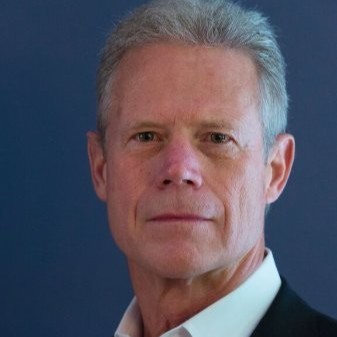By Mariyah Saifuddin

This highlights the second in a two-part podcast series, Move to the Cloud. You can read the blog about the first podcast here.
Every IT implementation has its set of unknowns. These unknowns can affect all aspects of the project, be it with C-level executives who are concerned with the effect on the business or the technical team that is unsure of a new system. What can be done to mitigate the risk?
In the first of this two-part podcast series, retired CIO Don Whittington talked with Mustansir Saifuddin about a culture where IT as part of the business and the importance of empowering the CIO to act as an enterprise architect in bringing together the C-suite stakeholders to collaborate toward a strategy. As an architect, the CIO explains the purpose of the IT initiative, the risks, and the rewards associated with the project.
In the second podcast of the series, Whittington and consultant James Kendrick address the importance of creating a team that aligns IT and company leaders on longterm strategy and budget, so that IT projects take place in the right way.
1. Create an IT CapEx Team
Whittington advocates creating an IT CapEx Committee that drives strategy and the overall budget. When Whittington was CIO at Florida Crystals, the committee consisted of the different parts of the business (CFO, operations, etc.). Although they may not have agreed with one another, the members of such a committee worked as a team to determine a strategy and budget. Rather than competing for the same funds, the group members were aligned and determined an overall budget. This allowed for a unified voice at board meetings – a voice based on facts and not intuition.
Collaboration at the C-suite creates a team that believes in one another. Innovation inherently involves something new, so communication and trust is key. Collaboration changes the conversation from “there was an error” to “how do we address the challenges.” C-level executives coming together changes the direction of any initiative.
2. Weather Ups and Downs Together
It isn’t always easy from an implementer’s standpoint.
Innovation often comes with a bunch of unknowns. There will be ups and downs as those deep in the development and implementation will face cost, scope, and timing issues.
Having a unified C-suite committee allows for the company to continue to move forward while determining how to overcome obstacles and challenges.
3. Create a powerful team
Having the right resources is also important. So what’s the secret to a powerful team?
Partners: Find knowledgeable partners that can come in and become a part of your team. They should become such a natural part of your team that the conversation is not “us” and “they” but rather “we.”
Business resources: The team must include people involved with the functional side of the business. They understand how the business works. Getting their insights and feedback helps drive successful implementations.
Multiple teams: It is ok to be part of the project team and business team at the same time. However, know which team you are playing for in the moment. It may be all of them, or one of them may trump the others.
Recognize critical team roles: Project management, agile capabilities, and change management skills are all important parts of a successful team.
Interested in more Tech-Driven Business podcasts? You can listen here
Listen to Part 1 of the Move to the Cloud podcast series: A visionary CIO on innovation, culture and keys to IT success
About Don Whittington
Don Whittington is retired vice president and CIO of Florida Crystals Corp., a vertically integrated sugar company with headquarters in West Palm Beach, Fla., He has a longtime partnership with SAP, Virtustream and PwC, and in 2010 led Florida Crystal’s transition to the cloud at a time when such transitions were just being discussed. It was the first wholesale migration worldwide for a company.
Whittington also is chairperson for the SAP Global Agribusiness Advisory Council, SAP HANA Councils, and the Virtustream Client Advisory Board.
He has served as a director of America’s SAP User Group (ASUG) and as ASUG representative for SAP’s Global Executive Network (SUGEN).
About James Kendrick
 James Kendrick has a history of driving strategic clarity, solution delivery, and business performance with retail and industrial products leaders like Estée Lauder Cos., Florida Crystals, Corning and Dow/DuPont. Kendrick’s focus is helping companies take advantage of cloud platforms, data and analytics, digital tools, and agile methods to modernize the core and add competitive advantage at the edge.
James Kendrick has a history of driving strategic clarity, solution delivery, and business performance with retail and industrial products leaders like Estée Lauder Cos., Florida Crystals, Corning and Dow/DuPont. Kendrick’s focus is helping companies take advantage of cloud platforms, data and analytics, digital tools, and agile methods to modernize the core and add competitive advantage at the edge.
He has held executive positions at Accenture, A. T. Kearney, Florida Crystals and multiple successful startups.
Kendrick currently is global program manager at technology company AMI.
Updated Look at Enterprise Architects
In a recent report, McKinsey advanced the notion of enterprise architects and their importance, but contended they need to evolve in the digital world. McKinsey’s research with Henley Business School indicated digital transformations suffer when architects are not involved: technical debt increases, and fewer services are reused.
Today’s enterprise architect needs to evolve in these three ways, according to the report:
- From technology theorist to pragmatic communicator: Talk to leadership about the implications of technical decisions on M&A.
- From system advocate to engineer: At minimum, have some experience at both the business AND the IT sides.
- From enforcer to coach: With flexible systems comes the need for a more supportive and flexible approach.

